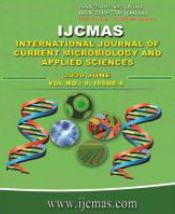


 National Academy of Agricultural Sciences (NAAS)
National Academy of Agricultural Sciences (NAAS)

|
PRINT ISSN : 2319-7692
Online ISSN : 2319-7706 Issues : 12 per year Publisher : Excellent Publishers Email : editorijcmas@gmail.com / submit@ijcmas.com Editor-in-chief: Dr.M.Prakash Index Copernicus ICV 2018: 95.39 NAAS RATING 2020: 5.38 |
India is likely to be the most populous country on the planet by 2030 with 1.6 billion people. It currently accounts for more than 17% of the global population and 456 million poor or can say 41.6% living on less than $ 1.25 a day. Among all problems, nutrition security is the main problem that is embedded within all four of its dimensions- availability, access, utilization, and stability. This review highlights current food insecurity and nutritional insecurity which are interlinked with each other. This review paper deals with important strategies to improve the nutritional security in India like the promotion of household kitchen gardening, dietary diversification, empowerment of rural women, providing nutrition education, climate change mitigation, use of ICT. The need for a paradigm shift in policy formulation from focusing on food security at the aggregate level to nutrition security at the level of each child and adult implied that the definition ‘food and nutrition security’ integrates both the conceptual frameworks of food security and nutrition security. This integrated approach aspires not merely to address the micronutrient malnutrition which is a bigger problem than food energy deficiency but is a food-based approach that also tackles non-food factors like water, sanitation, hygiene, and care practices.
 |
 |
 |
 |
 |